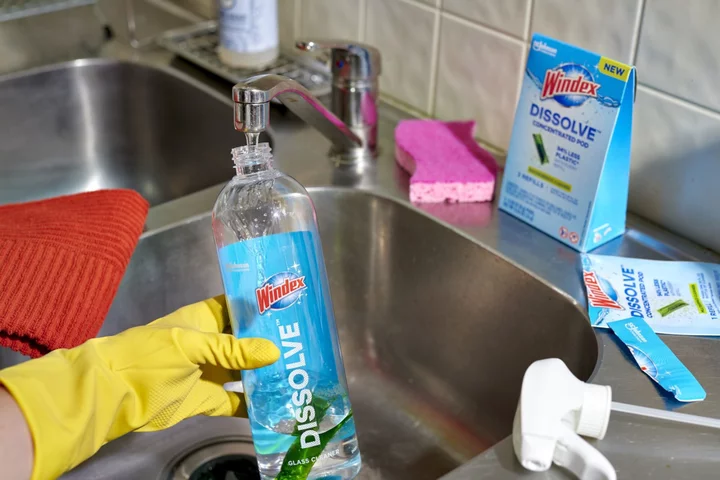From vertical mice to trackballs to laser-pointer-style pen mice, you can find a slew of ergonomic approaches to mousing comfort. The common aim: minimizing the threat of repetitive strain injuries you may incur from using a mouse and keyboard for many hours each day. Repetitive strain injuries—often called RSIs for short—are a set of musculoskeletal disorders caused by holding an unnatural position for too long or repeating the same motion over and over again. Typing on a keyboard and using a mouse have both been known to cause RSIs after years of using a computer every day, and these ailments tend to manifest initially as pain, weakness, or numbness in your fingers and wrists.
A poor office setup can also lead to pain in your back and shoulders. (Note: If any of these symptoms sounds familiar, please consult a doctor.) Ergonomic mice are designed to reduce or eliminate movements that have been known to cause these injuries or aggravate them in people who already suffer from RSIs. There is no iron-clad proof that they can actually prevent RSIs, but they're more comfortable for people who already experience pain when using a standard mouse.
Picking an ergonomic mouse can be a bit tricky, however. Unlike ergonomic keyboards, where two prominent types (curved and split layouts) create a sliding scale of balancing familiarity and ergonomic benefit, ergonomic mice are more varied in design and can convey different benefits. That's where this guide comes in. We'll go over the pros and cons of our top-rated ergonomic mice first, followed by a detailed guide that explains everything you need to know about how to choose the right one.
Choosing a Vertical Mouse: How to Flip Your Grip
The design that comes to mind when most of us hear the words "ergonomic mouse" is vertical. The shape is basically a conventional mouse turned 90 degrees, or the base of a mouse with a second sideways one stacked on top of it, allowing you to grip it without twisting your arm. Think of a handshake clasp instead of holding the device with your palm down.
(Credit: Zackery Cuevas)Naturally, the click panels and face buttons have been rotated to the side of the mouse, where they're accessible with the same finger motions you'd make using a standard mouse. Turning the mouse to meet your hand, rather than turning your hand to grip the mouse, removes strain on your arm and lets you use a more natural wrist motion to move laterally.
The downside to a vertical mouse can be its degree of accuracy. The shape moves your hand higher up the body and further away from the mouse sensor, changing the correlation between how you move your hand and the path of the cursor. Even after spending weeks with a vertical mouse, it can take an extra adjustment to line up the pointer with a small icon. That may go away over time, but it's a significant change that you should be ready for if you want to go down this road.
Nevertheless, a vertical mouse will be the best ergonomic mouse option for most users. It mitigates the musculoskeletal issues caused by overuse of a standard mouse while retaining most of the experience of using one. For gamers and creative pros who may not be able to use one all the time, the answer may be having two mice—a vertical model for everyday use, and a curved, palm-supporting conventional mouse for occasional precision work.
Trackballs: Minimizing Certain Movements
The trackball is a longstanding alternative to the traditional mouse that's had a cult following for decades. Instead of moving the mouse around to maneuver the cursor, a trackball senses the directional movement of a sphere mounted in a housing with buttons to mirror a standard mouse's inputs. You operate a trackball with very little arm movement and no real "grip," both of which can lead to or exacerbate repetitive strain injuries.
(Credit: Nathaniel Mott)You'll find two primary types of trackballs: thumb-operated and finger-operated. As with ergonomic keyboards, the two versions offer a sliding scale of familiarity (how easy it is for new users to convert) versus ergonomic benefit. Thumb-operated trackballs, like the ones on this list, are shaped like standard mice, which makes them more approachable. However, it's been noted that prolonged use of a thumb trackball has the potential to damage specific muscles in your thumb over time. Finger-operated trackballs may require a longer adjustment period but do not put any additional strain on your thumb or fingers. [This comes down to individual physiology as well; the editor of this story has used a thumb-control Microsoft Trackball Optical daily for more than 15 years with no apparent ill effects. —Ed.]
Both styles are an acquired taste; you need to try a trackball to really know whether or not it'll work for you. People tend to figure out pretty quickly whether they prefer twirling a trackball to pushing and pulling a standard mouse. We recommend finding a shop where you might be able to try one before buying, or at least making sure you can send a purchase back if it isn't a good fit.
Pen Mice: Sketch Your Way to Comfort?
The least common type of ergonomic mouse we've reviewed, the pen mouse, is a bit of an oddity. (Don't confuse these with the simple stylus pens used on tablets and touch screens.) Some, like the mice from Penclic, look like a fountain pen sticking out of an inkwell: You grip them like a pen, but push them around a desk or mousepad like a conventional mouse. Others take the concept further, essentially swapping out the mouse for a laser pointer that you can point at a surface and move to adjust the position of your cursor.
(Credit: Penclic)Regardless of the iteration, a pen mouse does not force you to twist your wrist to lie flat, and given their small physical size it's easy to find a position that minimizes arm movement. Finally, putting the mouse buttons and actions on a pen reduces the strain caused by awkward button placements on a standard mouse.
The pen-style grip still is a source of ergonomic concern, however. Curling your fingers around a pen mouse for many hours per day over a period of years seems like a recipe for a specific form of repetitive strain injury. That said, holding a pen requires much less grip strength than using a mouse, so this may only be a concern for people with painful wrists or fingers.
Standard Mice: Are They Good for Your Hands?
If you do not already have repetitive stress injury symptoms, you may not want to deal with the tradeoffs of a specialized ergonomic mouse such as reduced fine accuracy and an adjustment period that will lead to some short-term productivity loss. In the case, you can still do yourself a solid and buy a mouse with a comfortable, supportive shape. Conventional mice come in all shapes and sizes, and choosing one that feels good in your hand is one of the most important parts of your buying decision.
(Credit: Molly Flores)If at all possible, buy a mouse fitted to your dominant hand. Mice are "fitted" one way or the other, in part, because manufacturers can create more specific and supportive shapes. Unfortunately, few companies make left-handed mice, so lefties may have to pick from a small set of specialty options or find a well-shaped ambidextrous mouse.
Beyond that, ergo-positive traits vary from mouse to mouse. Certain features imply more support, such as a "thumb wing" or rest for your opposable digit, but having one doesn't guarantee comfort. Some companies definitely skew toward different hand shapes; gaming mouse maker Corsair, for example, makes many well-shaped mice, some optimized for users with large hands. Read our reviews for more specific information about different mouse shapes, as our experts discuss how each mouse fits your hand.
So, Which Ergonomic Mouse Should I Buy?
Now that we've described the different kinds of ergonomic mice, you hopefully have an idea of which you want to go out and try. This roundup offers a rundown of the best we've tested, with detailed reviews. If you want to know more about the universal rules for picking a great mouse, check out our overall guide to the best computer mice. Looking for a top keyboard? We have an explainer for that too. And don't miss our guide to setting up a complete ergonomic home office.









